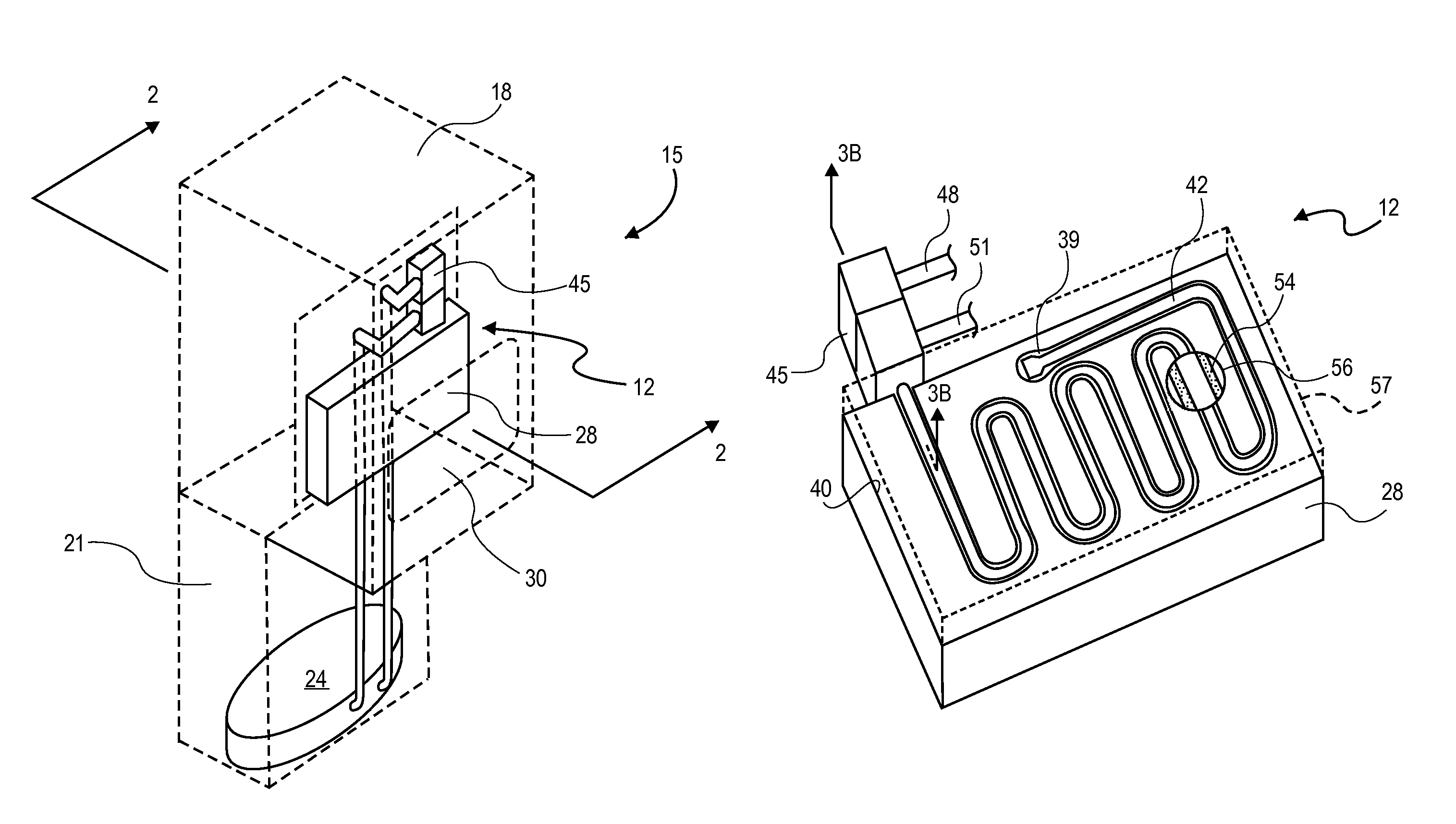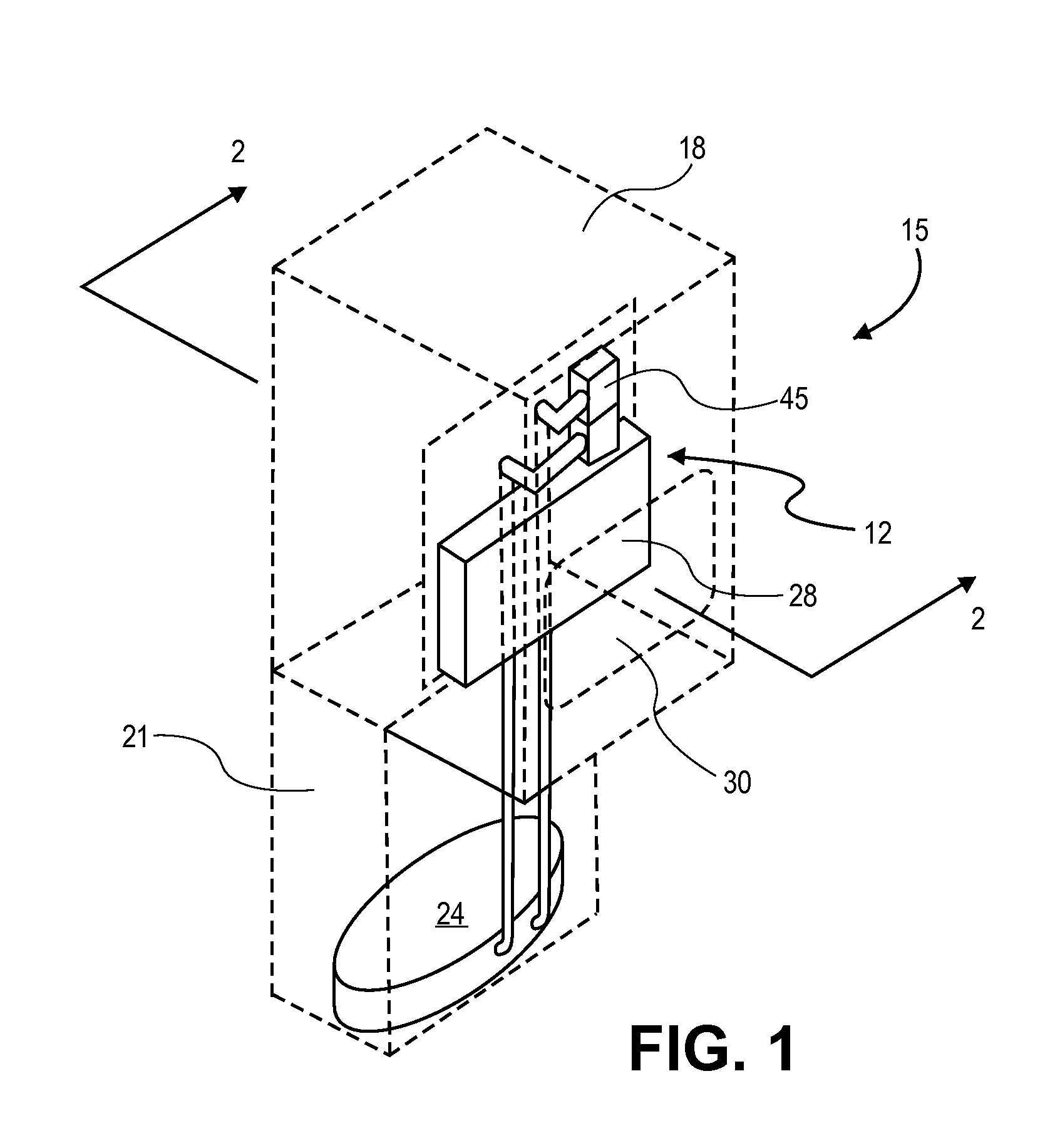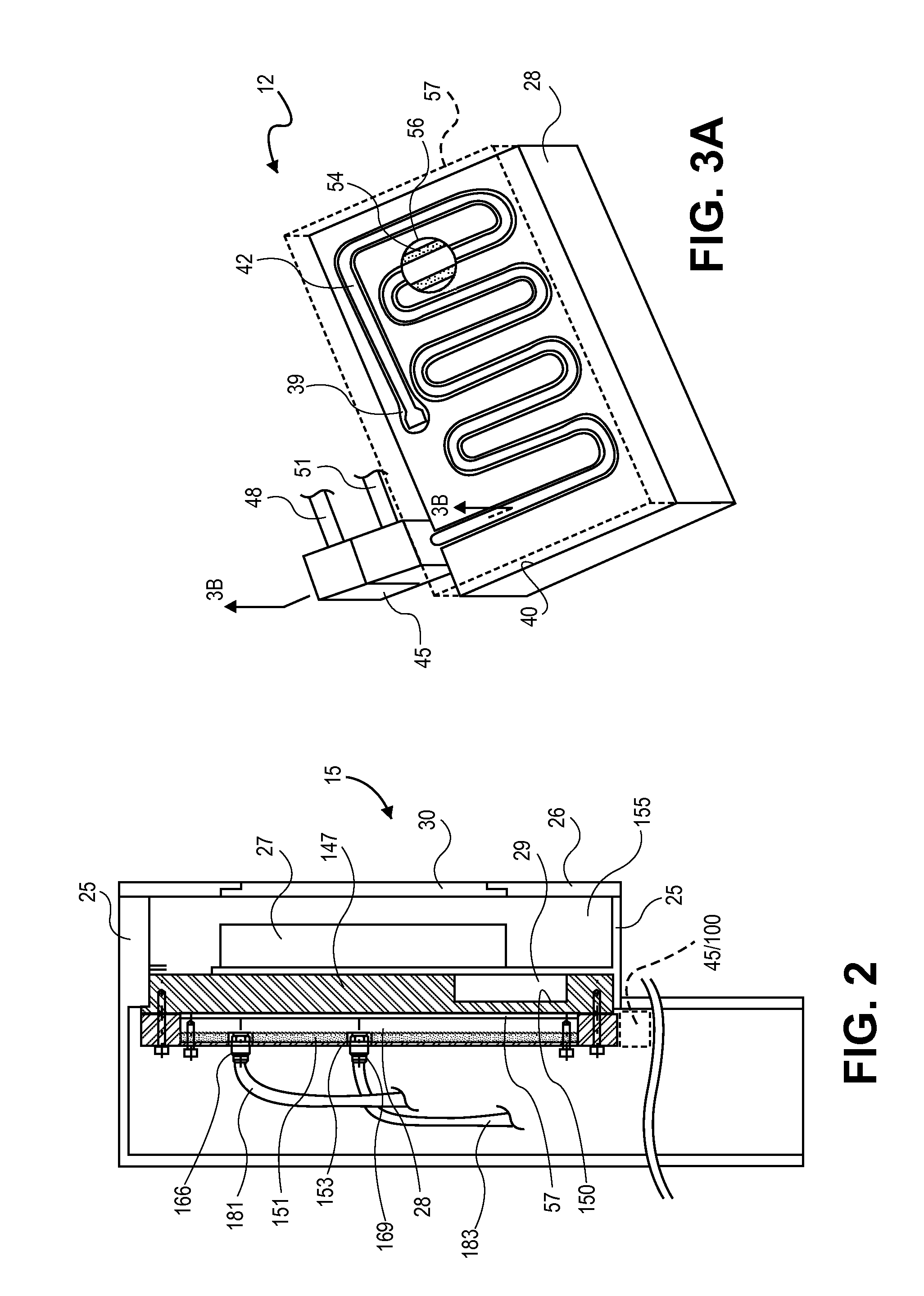Cooling system for an electronic display
a technology of electronic display and cooling system, which is applied in the direction of indirect heat exchangers, lighting and heating apparatus, instruments, etc., can solve the problems of insufficient heat dissipation system, the market is demanding the size of the display screen, and the heat dissipation system of the past, so as to reduce the amount of dust, improve the cooling capacity, and increase the fluctuation of temperature
- Summary
- Abstract
- Description
- Claims
- Application Information
AI Technical Summary
Benefits of technology
Problems solved by technology
Method used
Image
Examples
Embodiment Construction
[0045]Embodiments of the present invention relate to a cooling system for an electronic display and to combinations of the cooling system and the electronic display. The present invention also relates to a heat collector including a heat collector plate for the cooling system.
[0046]As shown in FIG. 1, a heat collector 12 may be provided in a display 15 in order to collect and remove excess heat from a compartment 18 and dissipate the excess heat in a location remote from the compartment 18, such as in a housing base 21. In the exemplary view of FIG. 1, the housing base 21 contains a compressor 24. The housing base 21 will also typically include fins or other heat dissipating components and structure associated with the compressor 24.
[0047]Advantageously the compartment 18 is a thermally insulated enclosure. For example, in FIG. 2, a cross section of the display 15 taken along lines 2-2 of FIG. 1 shows an alternative embodiment including walls 25, 26, which may be formed of an insula...
PUM
 Login to View More
Login to View More Abstract
Description
Claims
Application Information
 Login to View More
Login to View More - R&D
- Intellectual Property
- Life Sciences
- Materials
- Tech Scout
- Unparalleled Data Quality
- Higher Quality Content
- 60% Fewer Hallucinations
Browse by: Latest US Patents, China's latest patents, Technical Efficacy Thesaurus, Application Domain, Technology Topic, Popular Technical Reports.
© 2025 PatSnap. All rights reserved.Legal|Privacy policy|Modern Slavery Act Transparency Statement|Sitemap|About US| Contact US: help@patsnap.com



